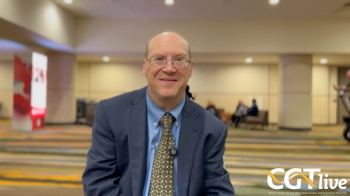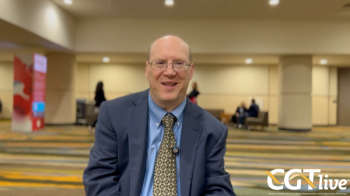
Steve Kanner, PhD, on Evaluating chRDNA Technology for ATTR and Familial Hypercholesterolemia
The chief scientific officer of Caribou Biosciences discussed results from preclinical research evaluating the gene editing approach.
This is the second part of an interview with Steve Kanner, PhD. For the first part,
“[W]e saw a 98% reduction of the Ttr, which is extraordinary, and would keep pace with what's been observed using sRNA approaches.”
Transthyretin amyloidosis (ATTR) and familial hypercholesterolemia (FH) have both been linked to genes expressed in the liver: transthyretin (Ttr) in the case of ATTR and proprotein convertase subtilisin/kexin type 9 (Pcsk9) and angiopoietin-like 3 (Angptl3) in the case of FH. Thus far, effective commercially-available and investigational treatments for ATTR and FH have largely taken the form of small RNA (sRNA) therapeutics, antisense oligonucleotides, or monoclonal antibodies. Although such treatments may have the potential to suppress expression of the aforementioned genes, they require regular, continuous redosing to achieve this outcome. On the other hand, Caribou Biosciences is currently working on a CRISPR-based gene editing approach that may be able to knock out expression of these genes in the liver with a single, 1-time treatment. The company’s Cas12a CRISPR hybrid RNA-DNA (chRDNA) genome-editing technology, which is delivered by lipid nanoparticles (LNPs), utilizes an RNA-DNA guide with the intention of achieving precise on-target edits with a reduced risk of off-target edits, in comparison to what would be expected with an all-RNA guide. The company recently presented preclinical research evaluating the chRDNA technology in mice at
Shortly after the conference, CGTLive® spoke with Steve Kanner, PhD, the chief scientific officer of Caribou Biosciences, to learn more about the company’s findings in this early research. Kanner gave some background about ATTR and FH and the rationale behind Caribou’s approach. He then went over the results of the research, emphasizing that the chRDNA technology was indeed able to reduce expression of Ttr, Pcsk9, and Angptl3 in mice. Kanner also spoke about potential areas of interest for further research, such as combination approaches targeted at multiple genes or using the chRDNA technology to fix a mutated gene rather than knock out its expression.
REFERENCE
1. Losa-Llabata M, Rajmane P, Stanaway L, et al. Cas12a CRISPR hybrid RNA-DNA (chRDNA)-mediated in vivo genome-editing technology for efficient and functional hepatic gene disruption. Presented at: ASGCT Annual Meeting 2024, May 7-10; Baltimore, Maryland. Abstract #278
Newsletter
Stay at the forefront of cutting-edge science with CGT—your direct line to expert insights, breakthrough data, and real-time coverage of the latest advancements in cell and gene therapy.

















































